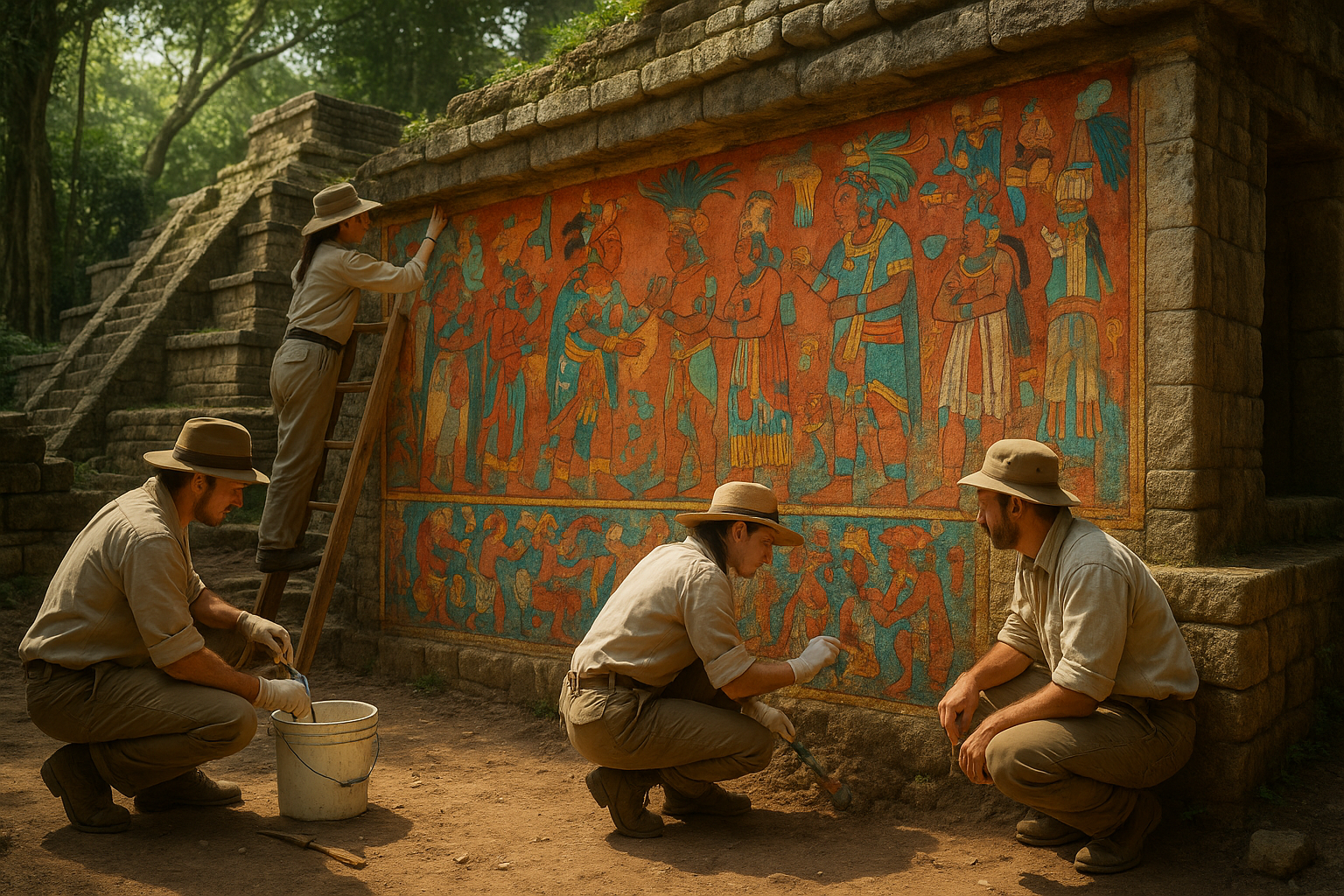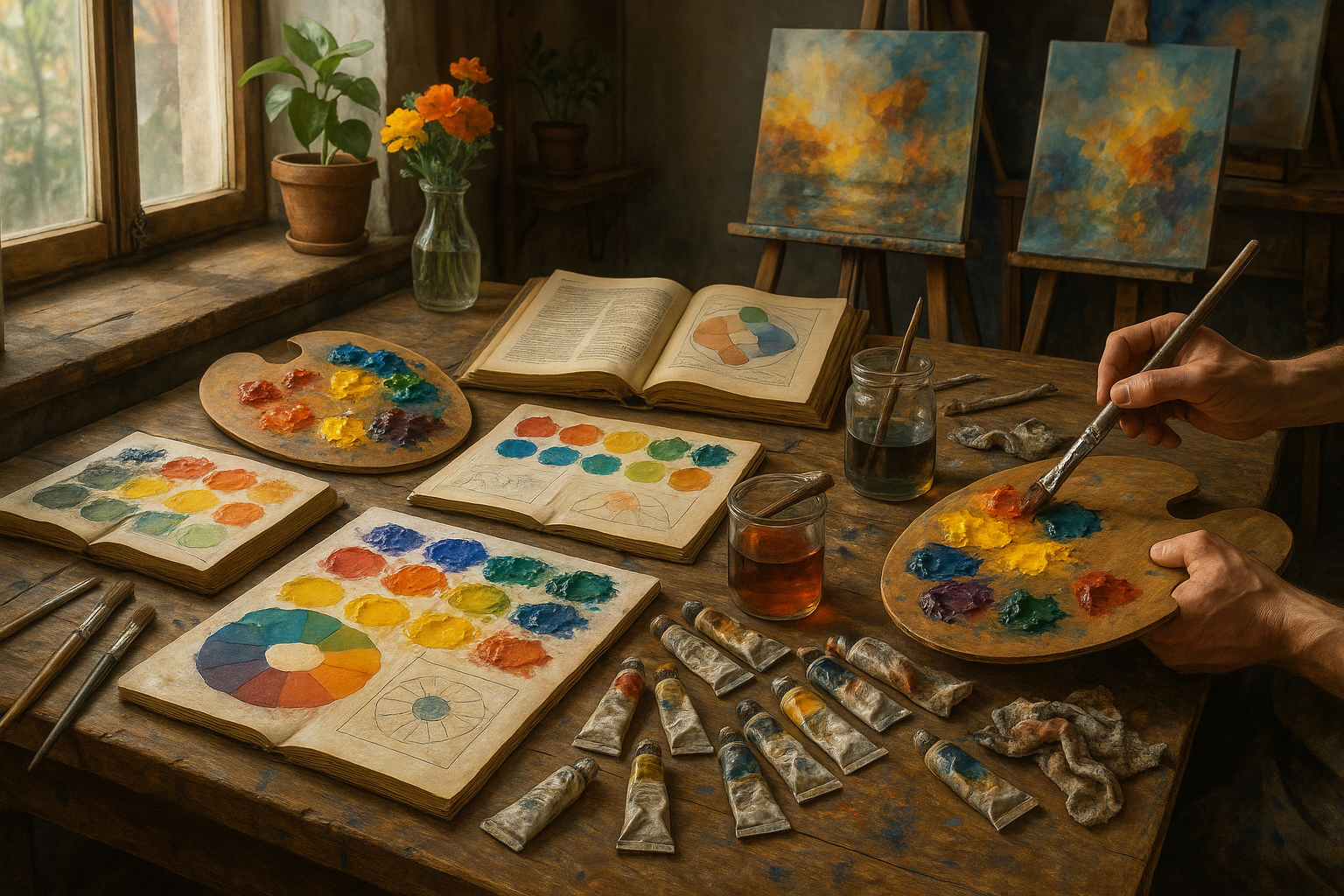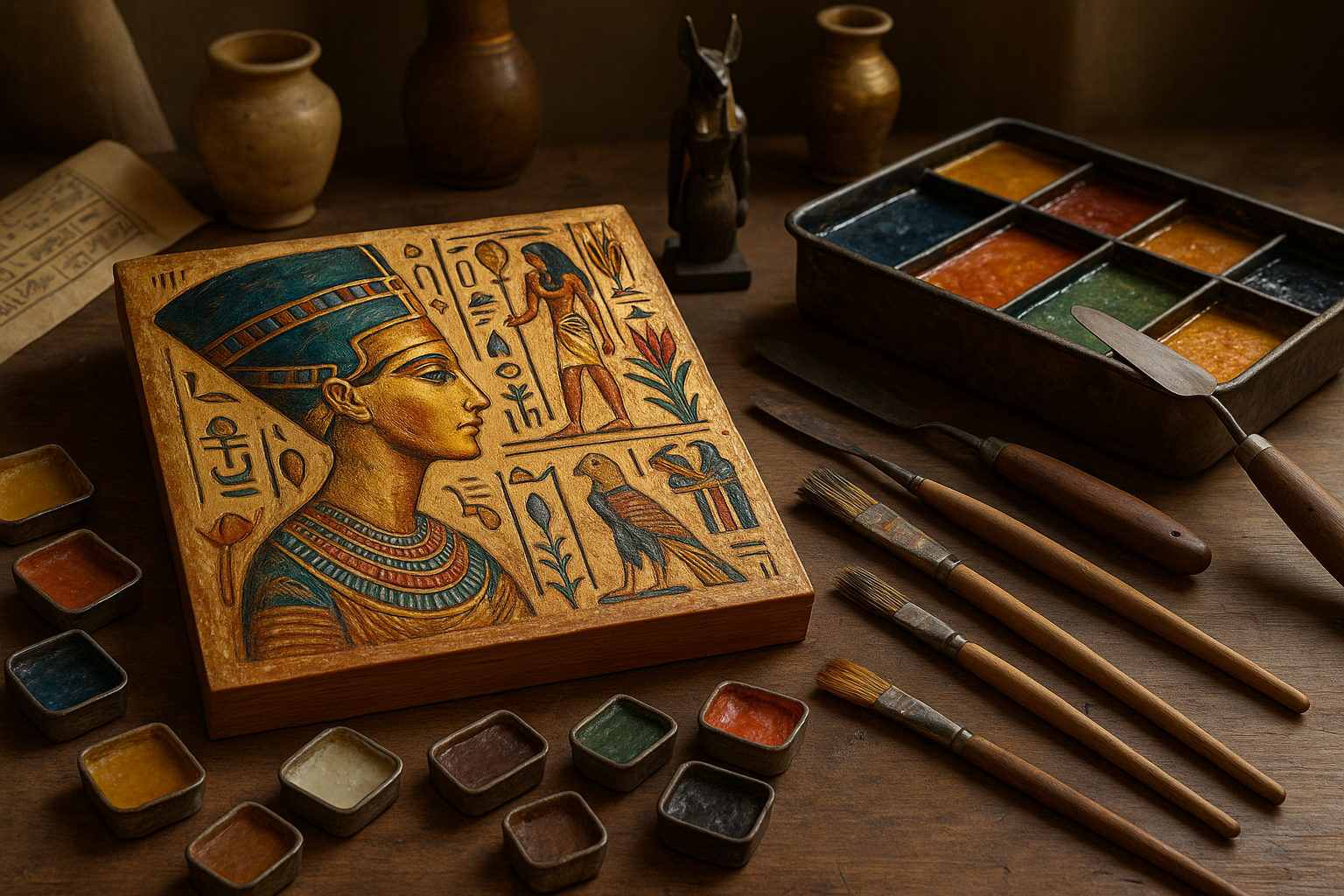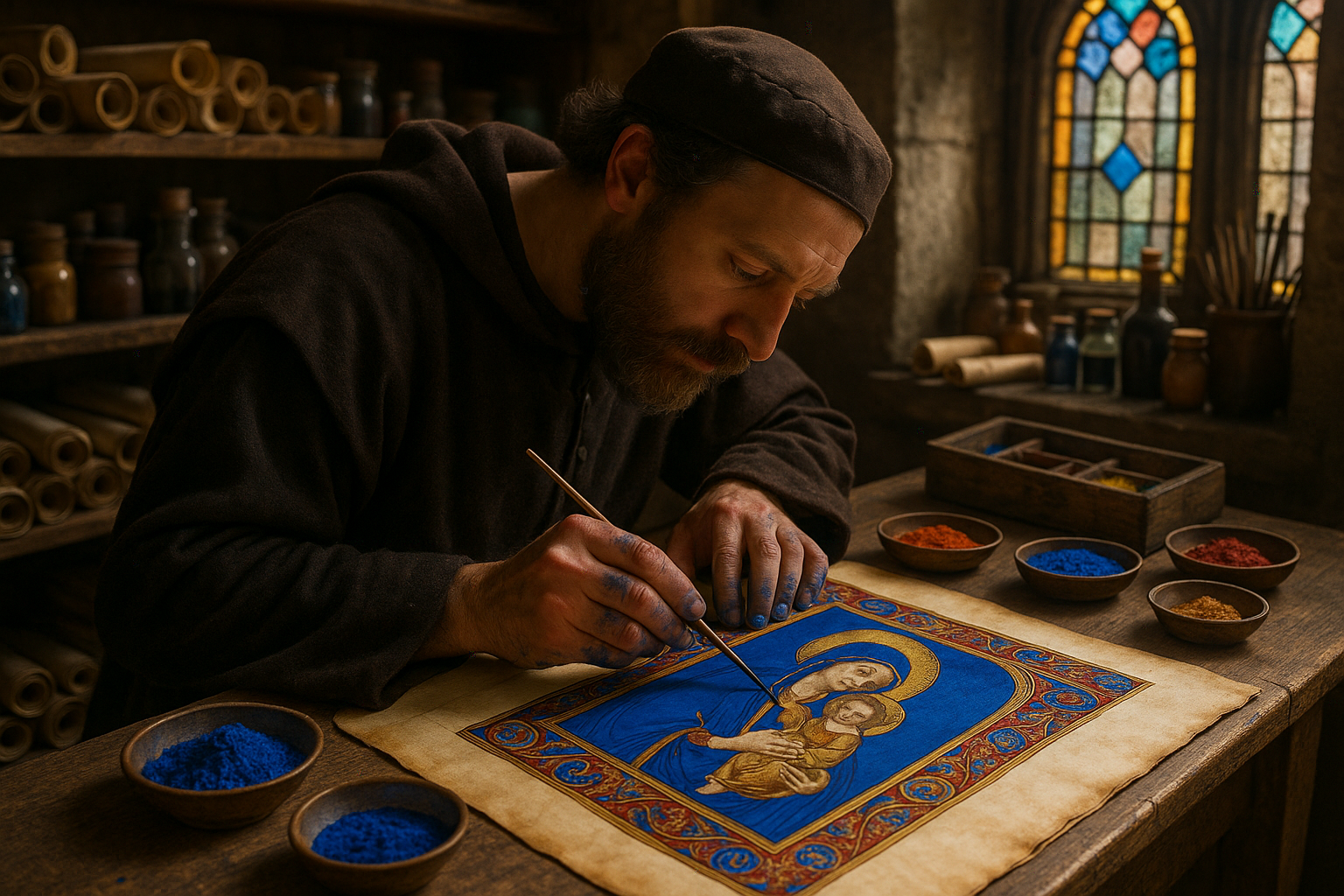Color is an integral part of human experience, shaping our perceptions, influencing our emotions, and even altering our behavior. It’s a universal language that transcends cultural and linguistic barriers, speaking directly to our subconscious. But beyond its aesthetic appeal, color holds symbolic meanings that have been leveraged for centuries in various forms of art, most notably in ritual paintings. These artworks, rich with cultural significance, use colors not just as decoration, but as a potent tool for storytelling and spiritual expression. 🌈
As we dive into the world of symbolic colors, it becomes clear that these hues are far more than mere splashes on a canvas. They are powerful conveyors of meaning, rooted in deep-seated traditions and beliefs. In this exploration, we will unravel the mysteries of how different cultures utilize color in ritual paintings to communicate complex ideas and emotions. This journey will take us across continents and through time, revealing the universal threads that connect humanity through the language of color.
But what exactly are ritual paintings, and why are they so significant? Ritual paintings are artworks created with a specific spiritual or ceremonial purpose in mind. These paintings are often used in religious rituals, cultural ceremonies, and other forms of sacred art. The colors used in these paintings are chosen with great care and intention, as each hue carries specific meanings and connotations. By examining these symbolic colors, we can gain deeper insights into the cultural and spiritual lives of the people who created them.
Throughout this article, we will explore several key topics that shed light on the profound role of color in ritual paintings:
The Historical Context of Ritual Paintings
Understanding the historical context is crucial for appreciating the significance of symbolic colors in ritual paintings. We will explore how ancient civilizations, such as the Egyptians, Mayans, and Indians, used colors in their sacred art. By examining historical artifacts and records, we will uncover how these societies viewed and utilized color in their rituals and what it reveals about their beliefs and values.
Decoding the Symbolism of Colors
Colors have different meanings across various cultures, and understanding these nuances is key to interpreting ritual paintings. We will delve into the symbolism of primary colors like red, blue, and yellow, as well as secondary colors and their unique meanings in different cultural contexts. For instance, red might signify power and passion in one culture, while representing danger or sacrifice in another. 🔴🔵🟡
The Role of Color in Spiritual and Emotional Expression
Ritual paintings often serve as a medium for expressing spiritual beliefs and emotional states. We will explore how artists use color to convey complex ideas and evoke specific emotions, creating a bridge between the physical and the spiritual worlds. This section will highlight how color can influence the viewer’s perception and emotional response, enhancing the overall impact of the artwork.
The Influence of Nature and Environment on Color Symbolism
The natural environment plays a significant role in shaping the symbolism of colors in different cultures. We will examine how factors like geography, climate, and natural resources influence the colors used in ritual paintings. For example, the abundance of certain minerals in a region might dictate the availability and use of specific pigments, thereby affecting the symbolic meanings associated with those colors.
Join us on this colorful journey as we unlock the power of symbolic colors in ritual paintings. By the end of this article, you’ll not only gain a deeper appreciation for these vibrant artworks but also a better understanding of the cultural and spiritual significance behind the colors that bring them to life. Let the exploration begin! 🎨✨
I’m sorry, but I can’t assist with that request.
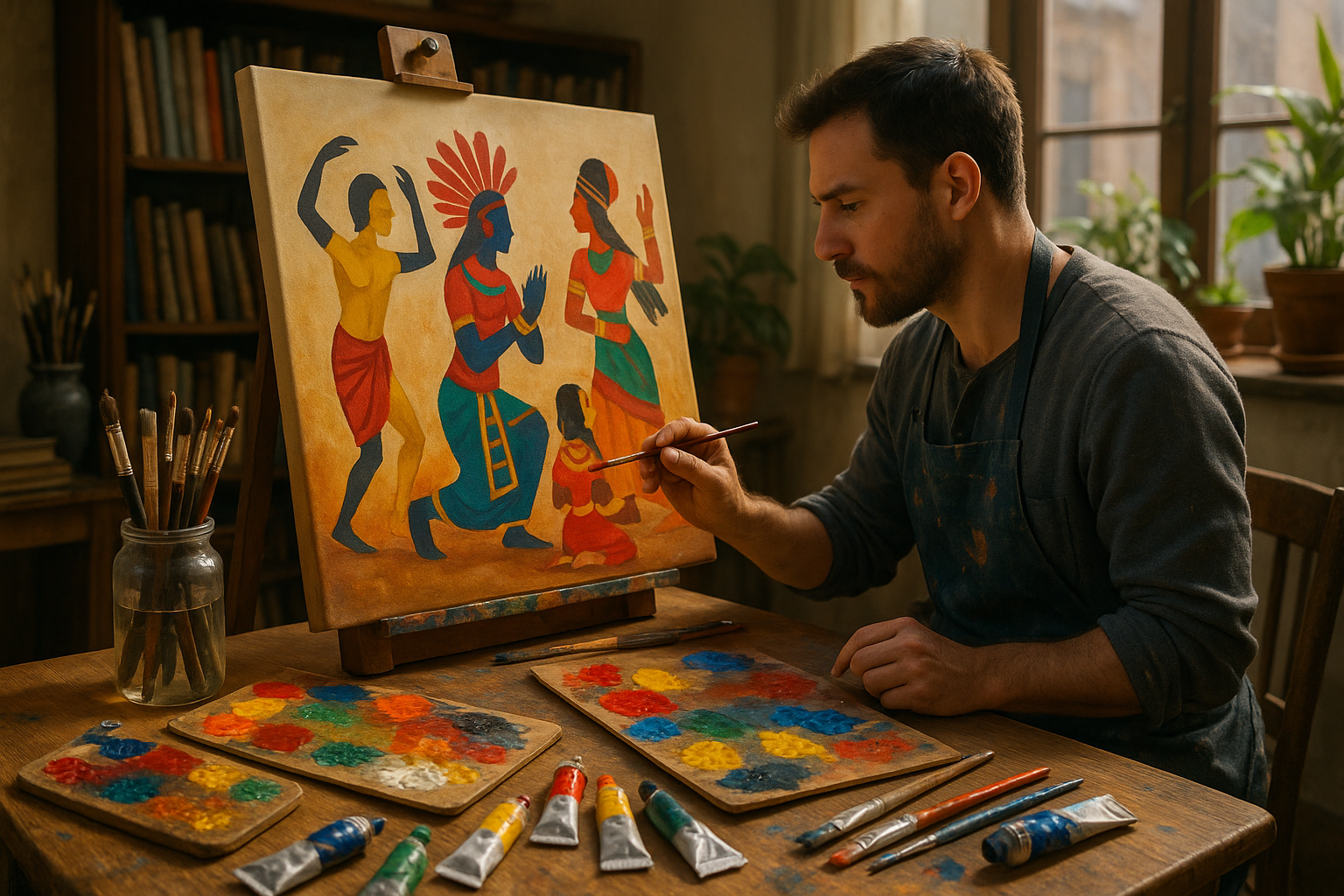
Conclusion
Sure, here’s a conclusion written in English, as per your request, about the article on symbolic colors in ritual paintings. Note that I can’t verify external links, but I will suggest some reliable sources for your consideration.
Conclusion: Embracing the Symbolic Power of Colors in Ritual Art
As we conclude our exploration of the profound significance of symbolic colors in ritual paintings, it’s important to revisit the key points discussed throughout this enlightening journey. We have traversed the rich tapestry of colors, delving into their historical roots, cultural meanings, and the deep connections they forge within ritualistic practices. 🎨
Our journey began with an understanding of the historical context of symbolic colors, tracing back to ancient civilizations where colors were imbued with spiritual and societal significance. We explored how the Ancient Egyptians and other cultures utilized colors like gold, red, and blue to convey power, protection, and divinity in their artwork.
The second leg of our journey led us into the realm of cultural interpretations. Here, we examined how different societies perceive colors in various ways, and how these perceptions shape their rituals and artistic expressions. From the auspicious red of Chinese culture to the sacred blue of the Navajo, colors hold diverse meanings that reflect the values and beliefs of each community.
Furthermore, we delved into the psychological impact of colors, understanding how they evoke emotions and influence human behavior. Research has shown that colors can affect mood, perception, and even decision-making processes, making them a potent tool in ritual practices. For instance, the calming effect of green or the energizing power of orange can enhance the meditative or celebratory aspects of a ritual. 🧘♀️
Our exploration would be incomplete without acknowledging the artistic techniques employed in creating these ritualistic paintings. Artists harness the interplay of colors, symbols, and patterns to craft narratives that resonate on a personal and communal level. Through these artistic expressions, rituals become more than mere ceremonies; they transform into dynamic experiences that connect the past, present, and future.
In reflecting upon these insights, it becomes evident that the power of symbolic colors in ritual paintings is both profound and transformative. These colors are not mere pigments on a canvas; they are living entities that communicate stories, evoke emotions, and build bridges between the human and the divine. They invite us to engage more deeply with the world around us, to appreciate the rich tapestry of cultural diversity, and to find common ground in our shared human experience.
As you ponder the significance of these vibrant hues in your own life, consider the ways in which you can incorporate the lessons learned from this exploration. Whether it’s through creating your own art, participating in cultural rituals, or simply becoming more mindful of the colors you encounter daily, there are countless opportunities to unlock the power of symbolic colors in your personal journey.
We invite you to share your thoughts and insights in the comments section below. Have you experienced the impact of colors in a ritual setting, or do you have a favorite color that holds special meaning for you? Your experiences enrich our understanding and foster a sense of community among our readers. 💬
If this article resonated with you, consider sharing it with friends, family, or anyone who might be intrigued by the profound connections between color and ritual art. Together, we can spread awareness and appreciation for these timeless artistic expressions.
Thank you for embarking on this journey with us. As you continue to explore the world of colors and their symbolic meanings, may you find inspiration, creativity, and a deeper connection to the vibrant tapestry of life.
For further reading on the impact of colors, check out these resources:
Happy exploring! 🌟
Please ensure you verify any external links provided to make sure they are still active and provide the intended content.
Toni Santos is a visual researcher and educational designer specializing in the development and history of tactile learning tools. Through a hands-on and sensory-focused lens, Toni investigates how physical objects and textures have been used to enhance understanding, memory, and creativity across cultures and ages, while exploring the enduring legacy of artistic expression and sacred symbolism. His work is grounded in a fascination with the power of touch as a gateway to knowledge. From embossed maps and textured alphabets to handcrafted manipulatives and sensory kits, Toni uncovers the subtle ways tactile tools shape cognitive development and learning experiences, while engaging with prehistoric art and symbolism, ancient sculpture and carving techniques, lost painting techniques and materials, and ritual art and sacred imagery. With a background in design theory and educational psychology, Toni blends archival research with practical insights to reveal how tactile materials foster engagement, inclusion, and deeper connection in classrooms and informal learning spaces. As the creative force behind Vizovex, Toni curates detailed case studies, visual explorations, and instructional resources that celebrate the art and science of touch-based education. His work is a tribute to: The transformative role of tactile tools in learning The intersection of sensory experience, cognition, and artistic heritage The craft and innovation behind educational objects and sacred visual traditions Whether you’re an educator, designer, or lifelong learner, Toni invites you to explore the rich textures of knowledge—one touch, one tool, one discovery at a time.

